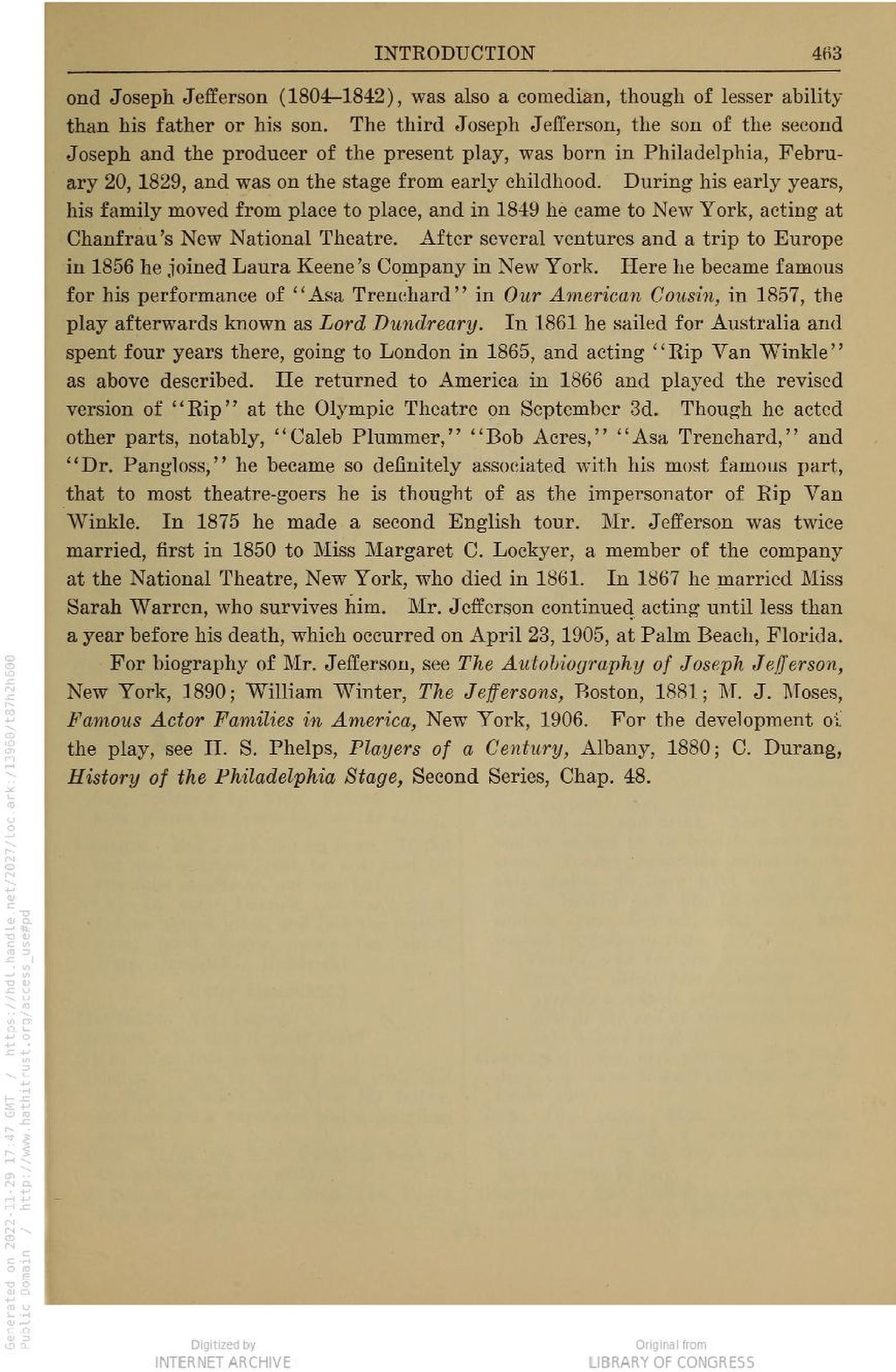ond Joseph Jefferson (1804-1842), was also a comedian, though of lesser ability than his father or his son. The third Joseph Jefferson, the son of the second Joseph and the producer of the present play, was born in Philadelphia, February 20, 1829, and was on the stage from early childhood. During his early years, his family moved from place to place, and in 1849 he came to New York, acting at Chanfrau's New National Theatre. After several ventures and a trip to Europe in 1856 he joined Laura Keene's Company in New York. Here he became famous for his performance of "Asa Trenchard" in Our American Cousin, in 1857, the play afterwards known as Lord Dundreary. In 1861 he sailed for Australia and spent four years there, going to London in 1865, and acting "Rip Van Winkle" as above described. He returned to America in 1866 and played the revised version of "Rip" at the Olympic Theatre on September 3d. Though he acted other parts, notably, "Caleb Plummer," "Bob Acres," "Asa Trenchard," and "Dr. Pangloss," he became so definitely associated with his most famous part, that to most theatre-goers he is thought of as the impersonator of Rip Van Winkle. In 1875 he made a second English tour. Mr. Jefferson was twice married, first in 1850 to Miss Margaret C. Lockyer, a member of the company at the National Theatre, New York, who died in 1861. In 1867 he married Miss Sarah Warren, who survives him. Mr. Jefferson continued acting until less than a year before his death, which occurred on April 23, 1905, at Palm Beach, Florida.
For biography of Mr. Jefferson, see The Autobiography of Joseph Jefferson, New York, 1890; William Winter, The Jeffersons, Boston, 1881; M. J. Moses, Famous Actor Families in America, New York, 1906. For the development of the play, see H. S. Phelps, Players of a Century, Albany, 1880; C. Durang, History of the Philadelphia Stage, Second Series, Chap. 48.
